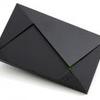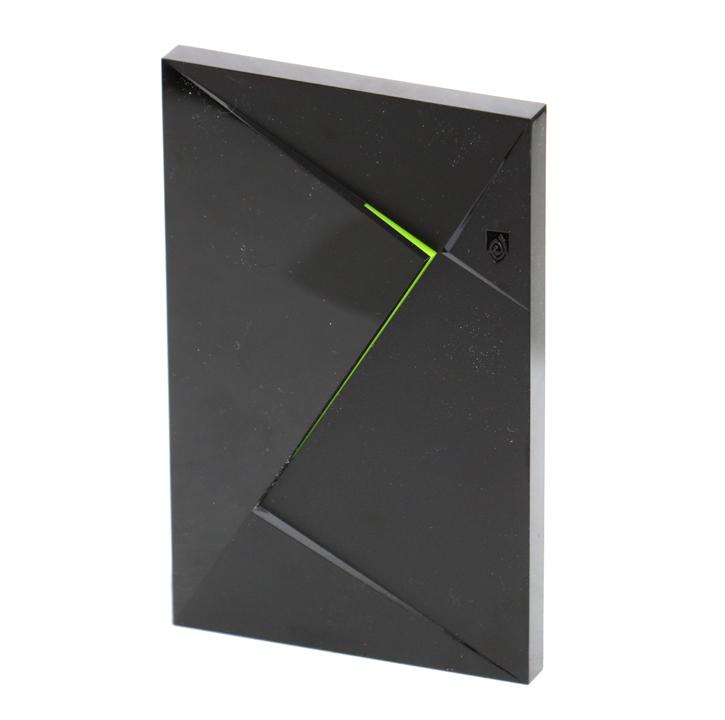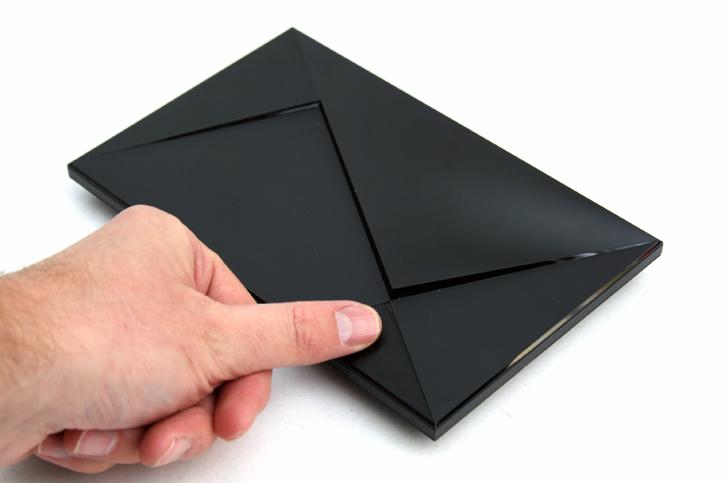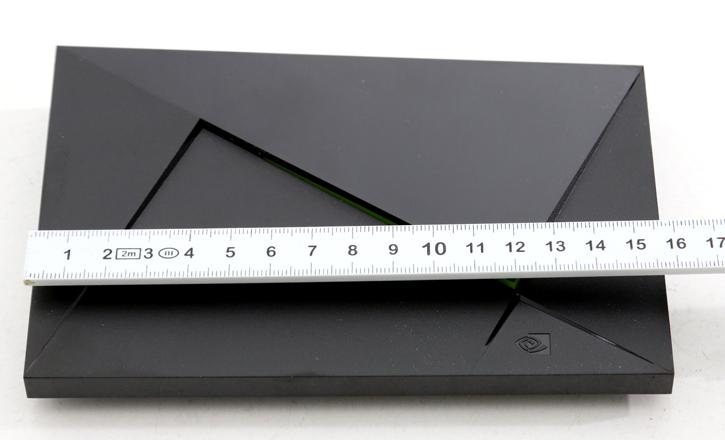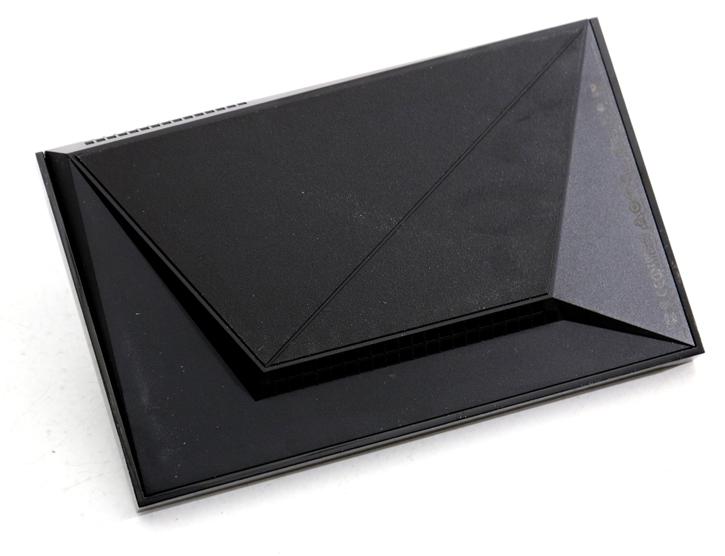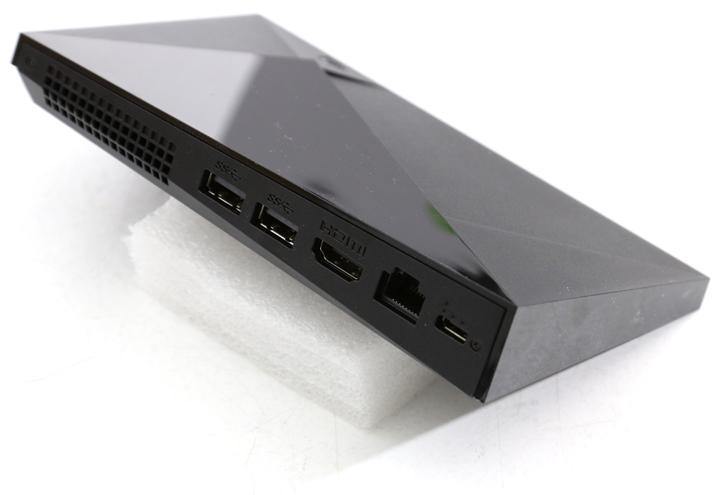Product gallery - Shield Android TV box
So here we have the console unit, housing a Tegra X1 processor with 256-core Maxwell GPU, 3GB of RAM and 16GB of internal storage (upgradable by using a small USB flashdisk or something). What a terrific design / look / feel. You can place the Shield flat or top right.
So when you press the logo, it actually functions as the on/off switch. Or, just use the remote of course. Once your Shield Android TV is powered on for the first time you can press it and your controller and/or other wireless devices will be scanned and added for functionality.
The unit is small, really small. The 'old' unit was like 21cm, the new model just over 15cm. Once powered on a green LED will show. You can tone down and dim that green lantern LED though. If you think the photo above is warped, no Sir ... the console has all kinds of weird shapes, lines and forms.
This here is actually the bottom side, there's rubberized padding on there to give it a firm grip on whatever you place it on. The overall feel is sturdy enough alright. Located at the backside you'll spot all the connectivity, and there's plenty of it. Let's dig through that shall we?
Located at the backside we see all the wired connections. Power connector, HDMI, Gigabit Ethernet HDMI 2.0 port, USB 3.0 ports x2: for mouse, keyboard, or even external hard drives. The micro SDXC slot and micro USB 2.0 port have been dropped though.
Ethernet wise you can use LAN or the unit's wireless 802.11ac 2x2 MIMO 2.4 GHz and 5 GHz Wi-Fi also compatible with 802.11g/n WiFi and then Bluetooth 4.1/BLE for headsets, other game controllers, etc. Once the unit is powered on, a Led will light up the green bar you can see in the photo above.
